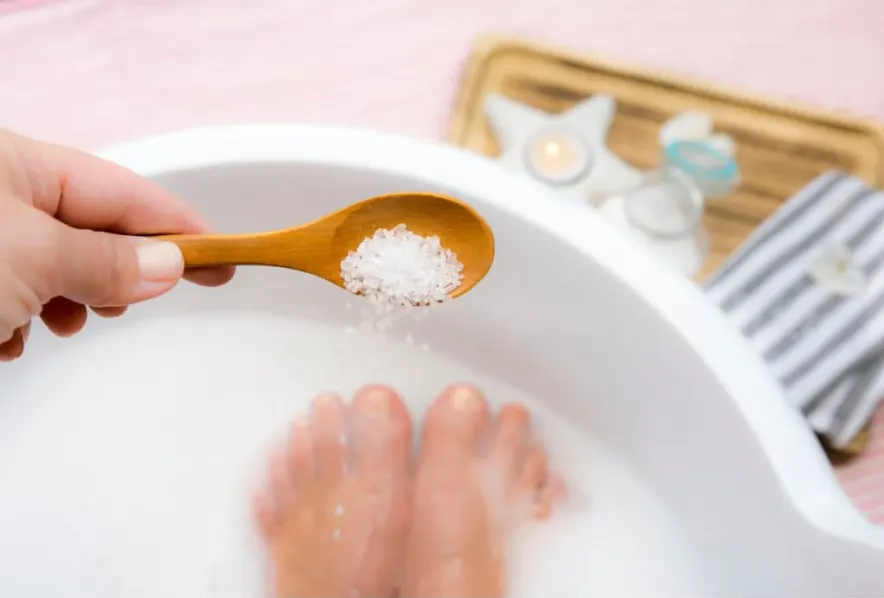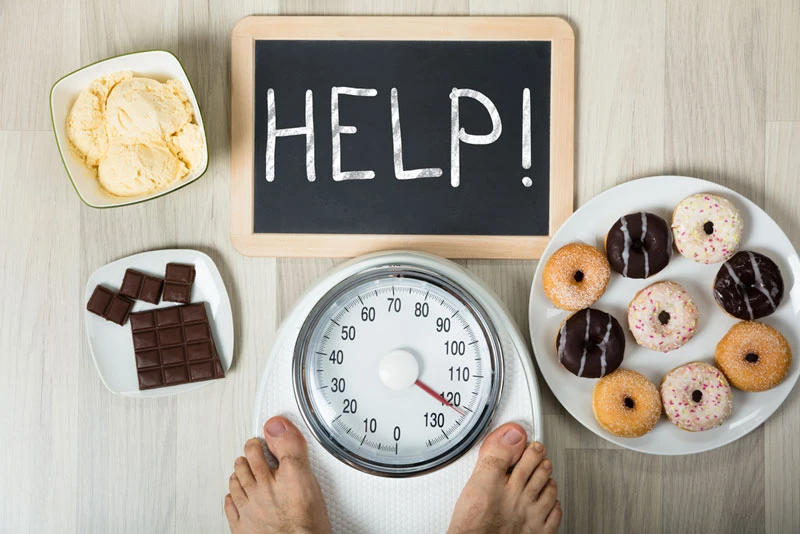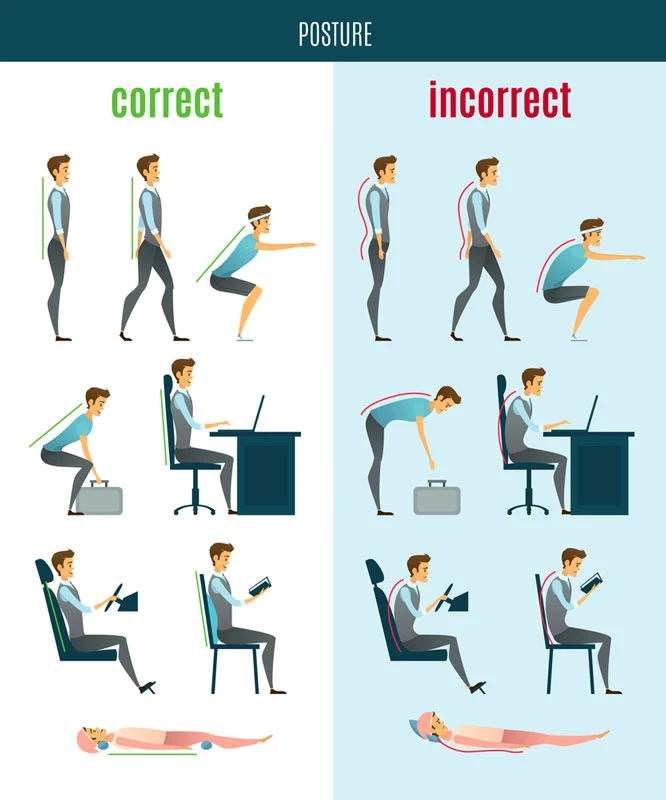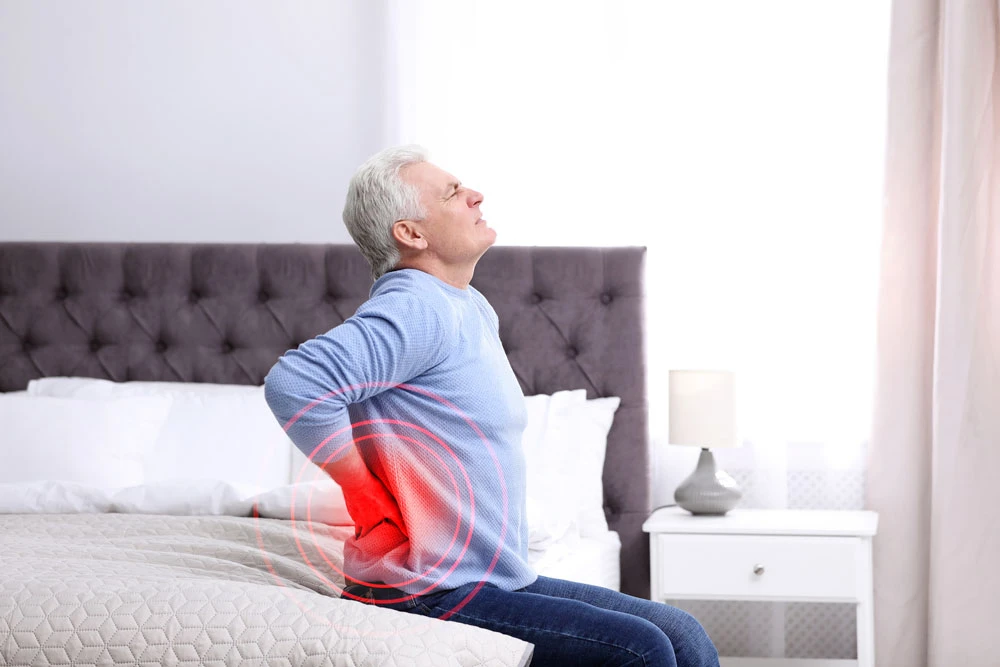“I bent down to put on my shoes and suddenly it felt like someone was sticking knitting needles in my lower back”
Low back pain is one of the most common physical ailments we can suffer. It is so prevalent that up to 80% of us will have back pain at some point in our lives.
You might have strained your back whilst doing yard work or cleaning your house. Perhaps your back might hurt from an old sports injury or a chronic condition such as arthritis or ankylosing spondylitis.
I remember when I first hurt my low back. I was getting into the car on a frosty morning, slipped on the ice, and argh!! A sharp stabbing pain rippled down my back.
I was 31 at the time and yes, age can often be the culprit.
With age, the bones and joints in your low back begin to change.
Your discs which are like jelly doughnuts, serving as shock absorbers between your vertebrae tend to wear out and sometimes become fragmented.
Sometimes, these structural alterations can cause pain.
There are some strategies you can use to manage low back pain from the comfort of your own home. I’ll explain what these are below, so keep reading for some home remedies you can try right away.
Sections
- At home low back pain remedies
- When should you see a doctor about low back pain?
- 1. If the pain lasts longer than six weeks
- 2. If the pain gets worse, even after at-home treatments
- 3. You have pain that wakes you up at night
- 4. You have additional stomach pain
- 5. There is pain accompanied by weakness, tingling, or numbness in the arms or legs
- 6. You have trouble with urinary or bowel control
At home low back pain remedies
1. Apply an ice pack directly to the area can help to decrease swelling and pain
Research has shown that using cold therapy on the lower back immediately following a back injury can alleviate pain by numbing the area and preventing or reducing swelling.
After 48 hours from the onset of back pain, you should switch out the cold therapy for heating pads or a hot-water bottle.
The warmth soothes and relaxes aching muscles and increases blood flow, which also helps the healing process.
2. Stay active
Although bed rest was once considered a critical part of back pain recovery, it has now been shown that too much bed rest does nothing to help you heal and at its worst, it will even accelerate low back pain.
After reviewing the data, researchers concluded that 2 days of bed rest for acute lower back pain was as effective as 7 days and resulted in less time lost from work.
So after your first 48 hours post-injury, you should try to start moving again.

You might not feel like moving when you’re in pain, but being sedentary allows the muscles around the spine and in the back to become weak.
This in turn can cause less support for the spine and result in long-term pain.
Start out slow with a simple walk for 15-20 minutes 3 times a week and build this up to a minimum of 30 minutes at a time.
3. Strengthen your core
Strong muscles, especially in your abdominal core, help support your back and can relieve your pain and prevent it.
You want to start out with something as simple as a front plank which works out your whole abdominal core.

You can start holding this position for 10-20 seconds and work up to 1 minute as you become more comfortable with it.
If this is too much for you then try some of these beginner core exercises which you can find in the video below.
4. Take a relaxing Epsom salt bath
Soaking in an Epsom salt bath for about 20 minutes can help to ease sore back muscles, especially after exercise.
The theory is that Epsom salt, or magnesium sulfate, works its way through the skin and into sore muscles and can help to relax them.
You will want to make sure the water is warm, not hot, and comfortable to the touch. Add the Epsom salts while the water is running to help them dissolve and soak in the bath for 15 to 20 minutes.

5. Quit Smoking
Nicotine in cigarettes and other tobacco products can weaken your spinal bones and take away vital nutrients from the spongy disks that cushion your joints.
Researchers in a 2013 study found that smoking caused nicotine-associated disk degeneration, as smoking reduces the flow of blood to the spinal disks. This can cause them to dehydrate and break down.

If you needed another reason to quit smoking, this is another big one. A healthy spine keeps your back flexible and prevents its muscles from becoming stiff and sore.
6. Maintain a Healthy Weight
Being overweight, obese, or quickly gaining significant amounts of weight can put stress on the back and lead to low back pain.

Shedding those extra pounds lightens the load on your lower back because it reduces the amount of mechanical force onto the spine thereby reducing your pain.
7. Stretching
If your back pain is from tight muscles then stretching can also help to loosen up those tense muscles and reduce your pain.
You should take your time and approach stretching exercises gently and avoid any bouncing or forced stretching that causes pain as this could worsen your problem.

The video below shows some gentle stretches which can help to relieve your low back pain safely.
8. Improve your posture to reduce back pain
If we do not use the correct posture when lifting or moving objects, it can aggravate low back pain. Once we start to lift heavy objects, we increase the loads placed on the joints in our spine.
Therefore, using the correct posture is important for the safety of our joints.

Most of us today also spend a good part of our lives sitting down in front of a computer which may be more harmful than you realize for your back health.
You want to have the proper ergonomics set up for your desk which means having all the bones in your spine lined up neatly, like a stack of perfectly aligned blocks.
You should keep your feet flat on the floor, rest your arms evenly on the table or desk, and keep your eyes level with the top of the screen.

Don’t forget to get up from your chair, stretch and take a walk regularly.
You can easily set an alarm on your phone to ensure you are reminded to do this whilst at work.
9. Adjust how you sleep
Most of us spend an average of 7-9 hours sleeping a night and finding the best sleeping position can really help to relieve low back pain.
As a rule, it is a good idea to stick with positions that maintain the natural alignment of your spine.

Placing a pillow underneath your feet can really help your back, even if it might be a little trickier to stay sound asleep.
If you are normally a side sleeper, putting a pillow between your knees can help your low back muscles relax more.

Typically, it is recommended to avoid sleeping on your stomach if you have low back pain.
However, if this is the only way you can fall asleep, then it is recommended to place a pillow under your lower abdomen and pelvis to prevent back strain.

Most cases of low back pain stem from strain or sprain due to simple overuse, unaccustomed activity, excessive lifting, or an accident.
Typically they will resolve themselves on their own within about four to six weeks, with or without medical treatment.
When should you see a doctor about low back pain?
While back pain often responds well to at-home remedies, there are some symptoms that should have you making an appointment with your doctor.
These include:
1. If the pain lasts longer than six weeks
2. If the pain gets worse, even after at-home treatments
3. You have pain that wakes you up at night
4. You have additional stomach pain
5. There is pain accompanied by weakness, tingling, or numbness in the arms or legs
6. You have trouble with urinary or bowel control
It’s vitally important to talk with a doctor when your back pain starts to interfere with your daily life as they will be able to guide you on the next steps.

This will most likely involve an initial diagnosis followed by X-rays or MRIs and perhaps a guided rehabilitation program.
If you or someone you know is struggling with back pain, sign up for my course HERE and begin the journey to pain-free living.
Not ready for the challenge?
Then subscribe to my weekly emails with helpful hints and tips on how to reduce your lower back/sciatica pain, Sign Up Here.
